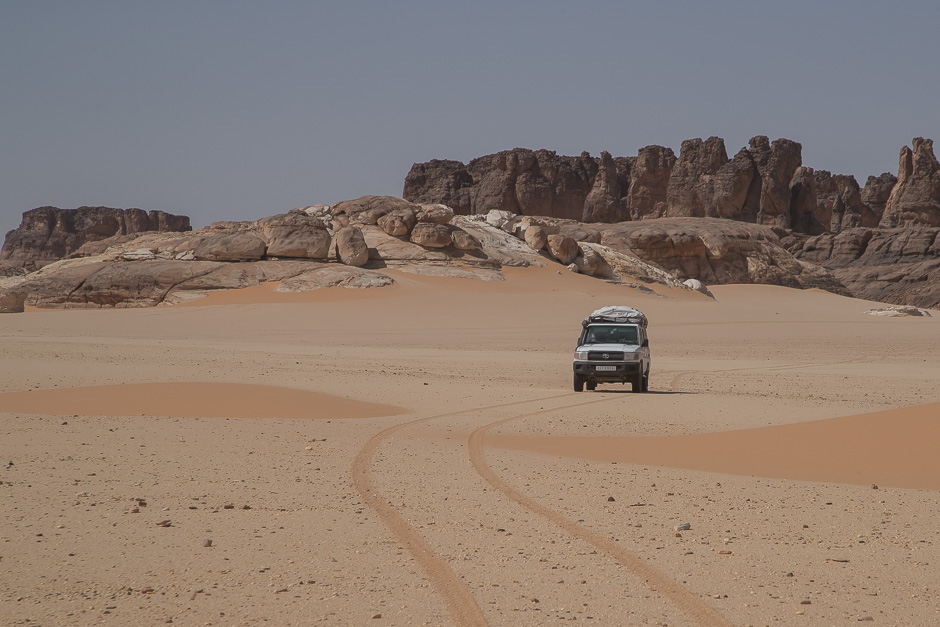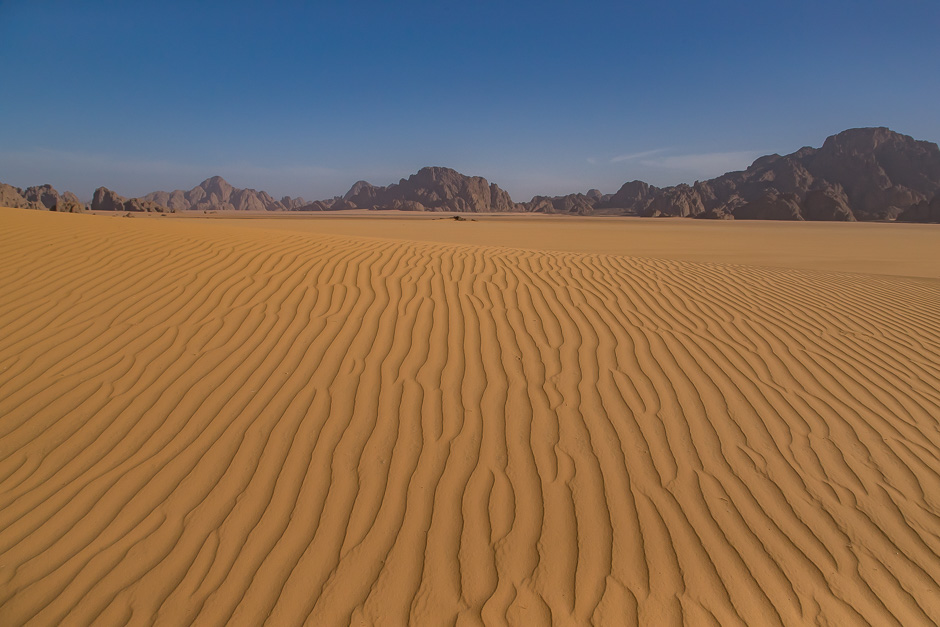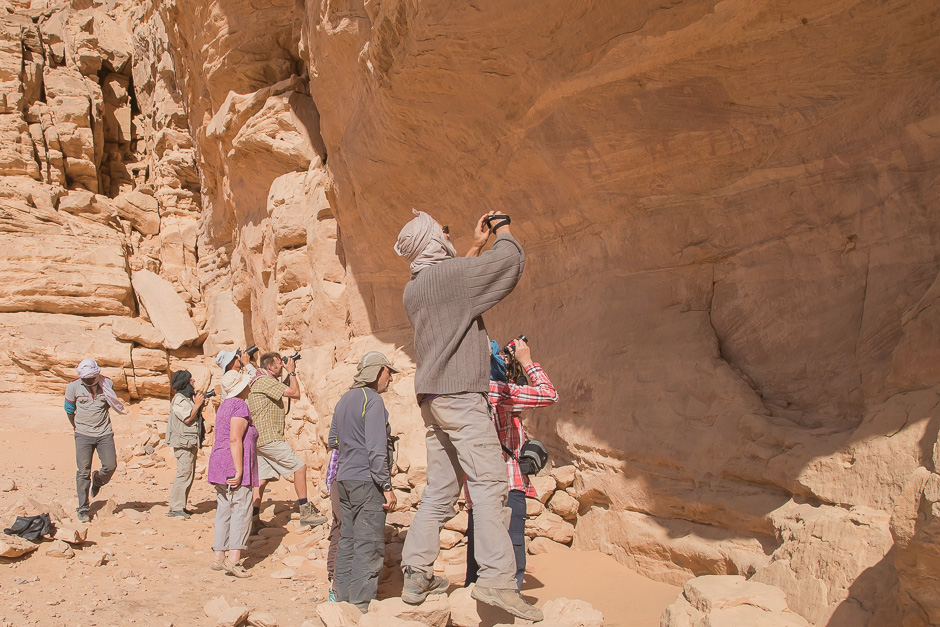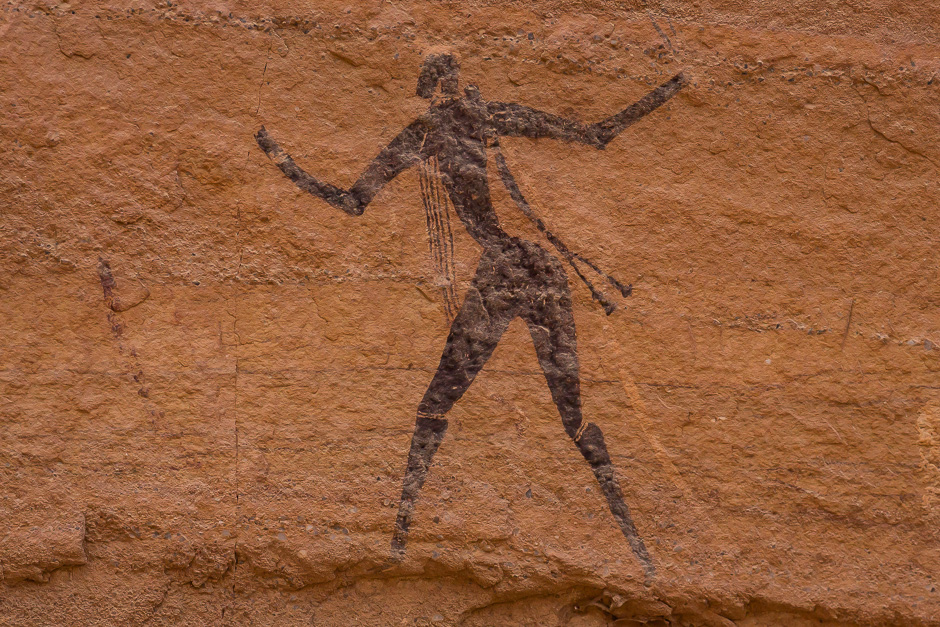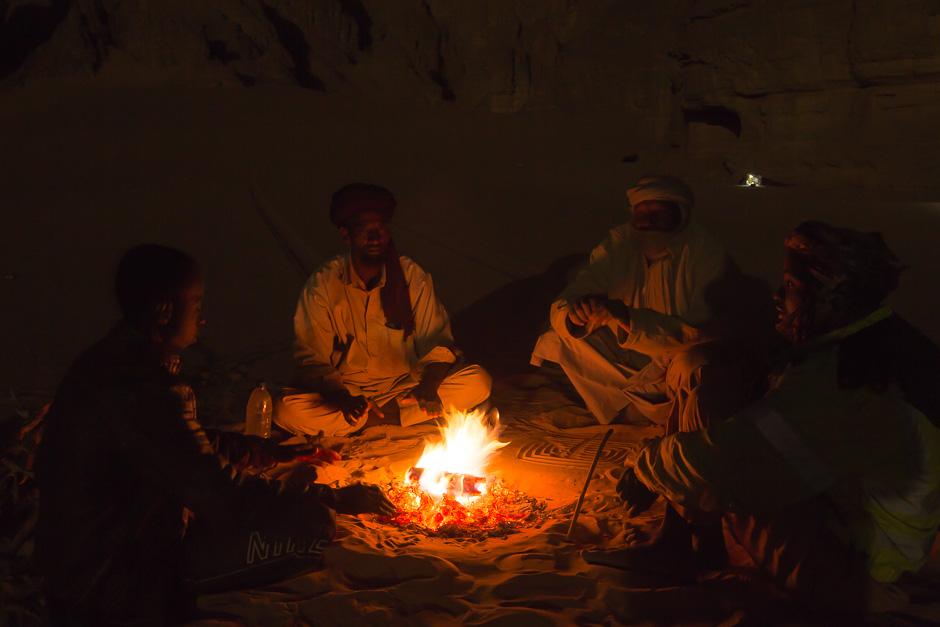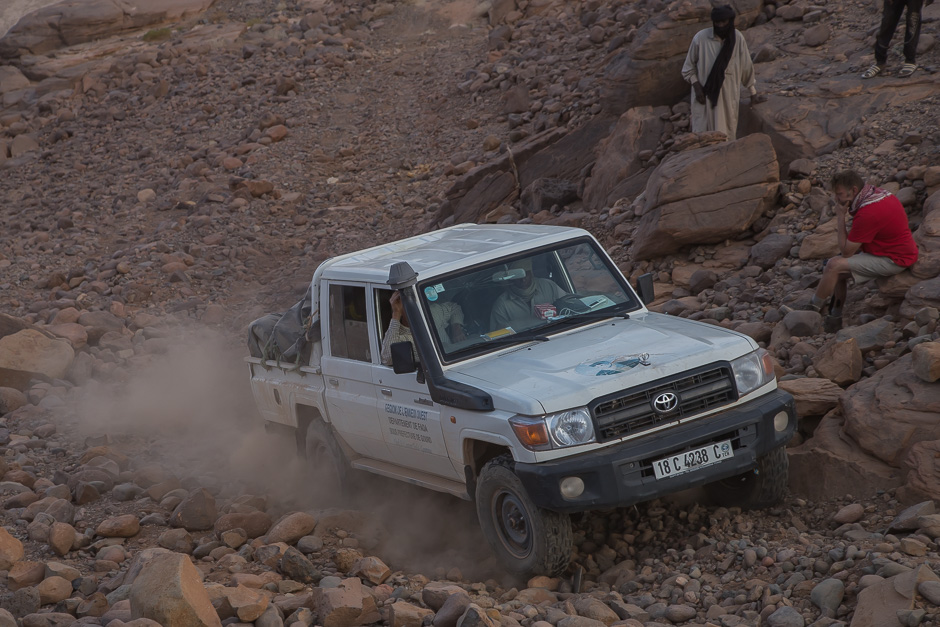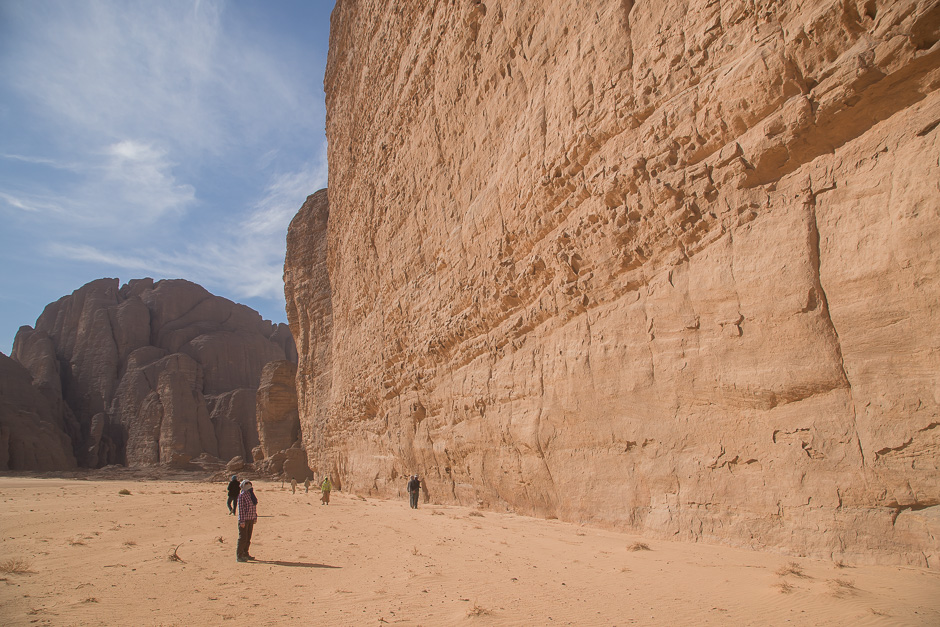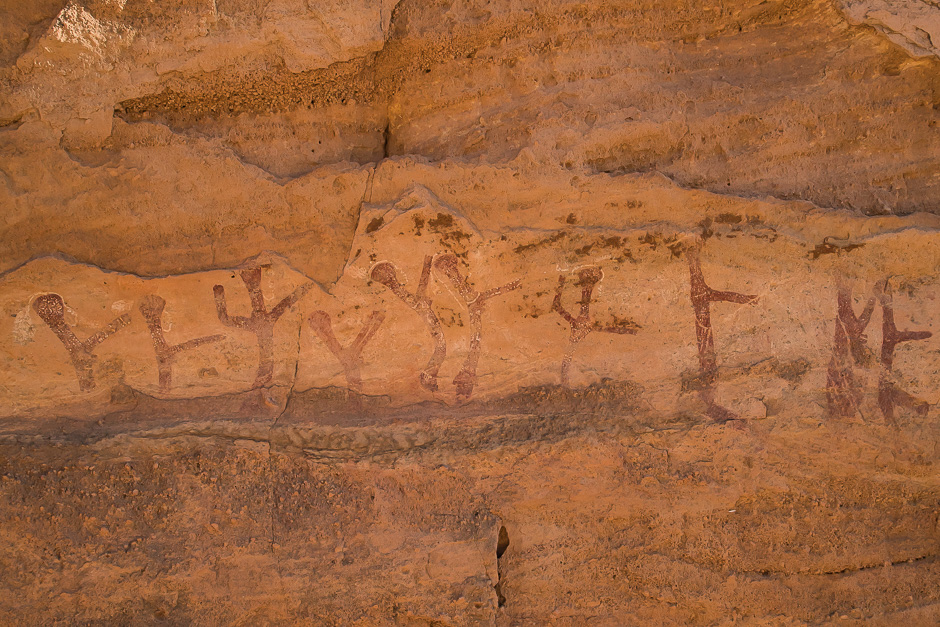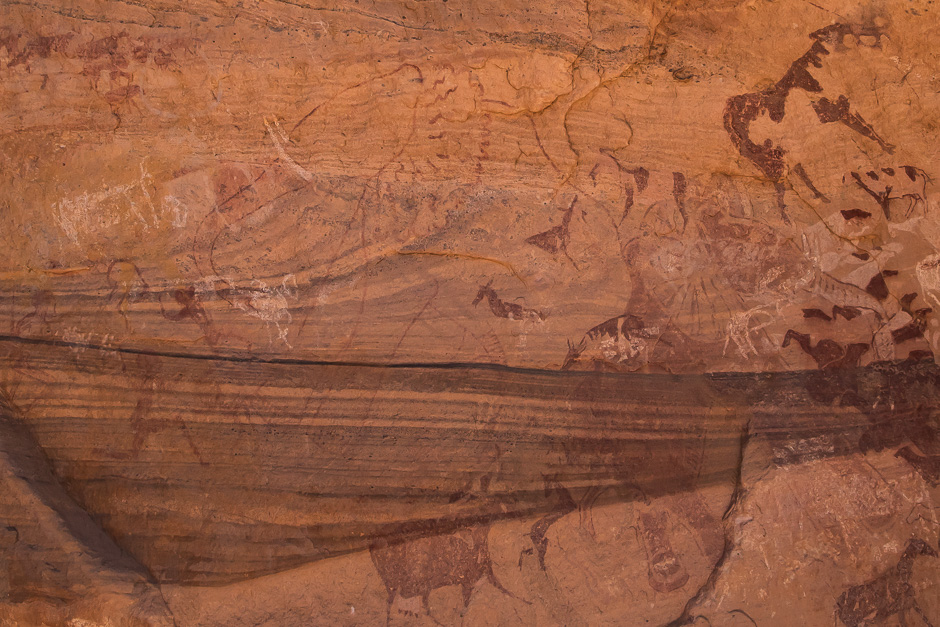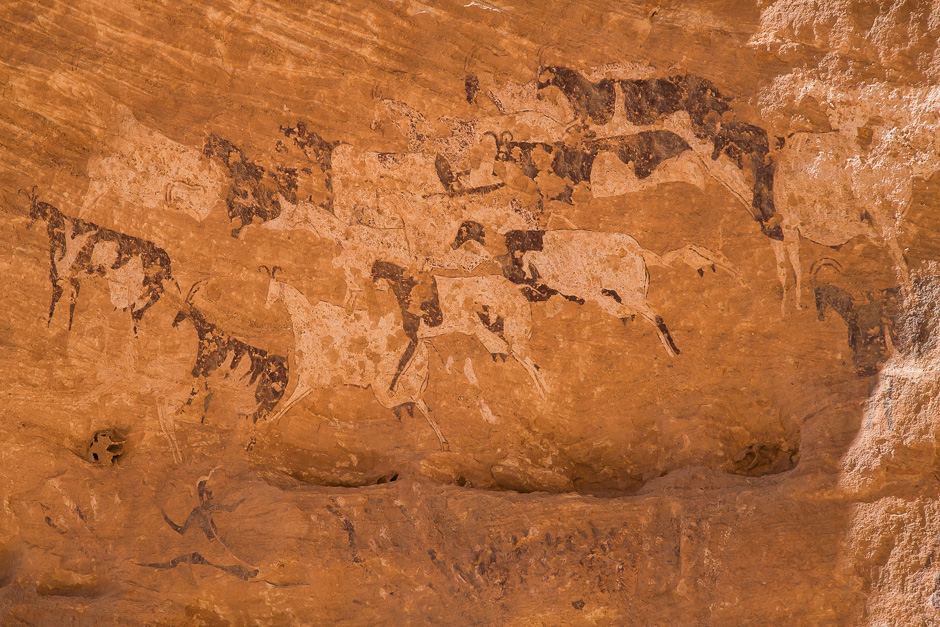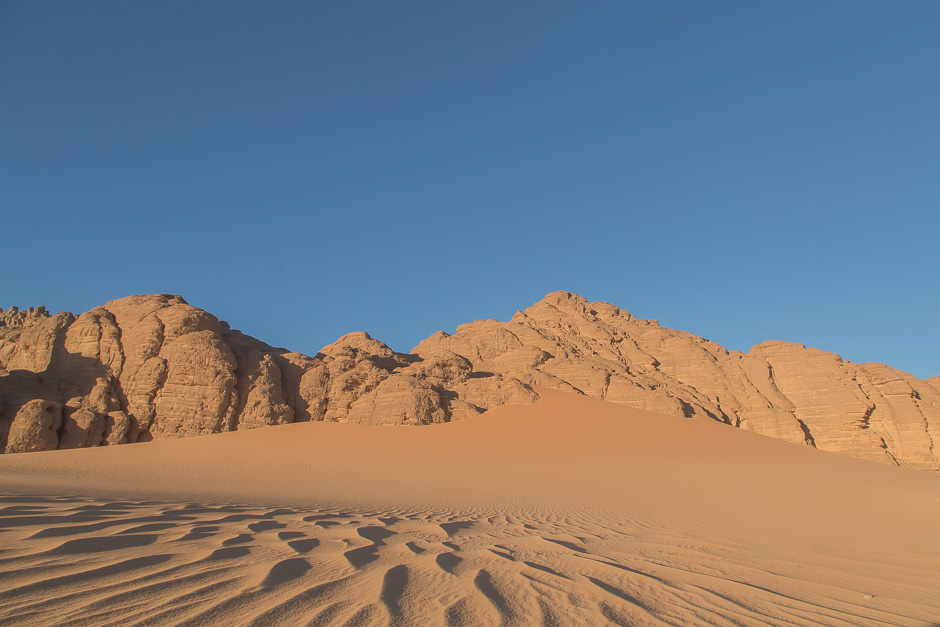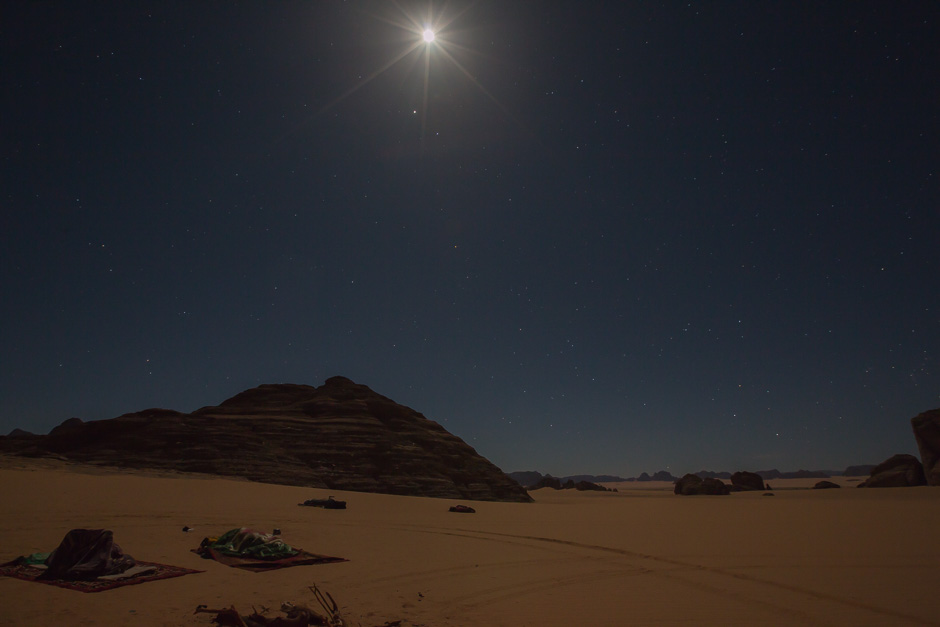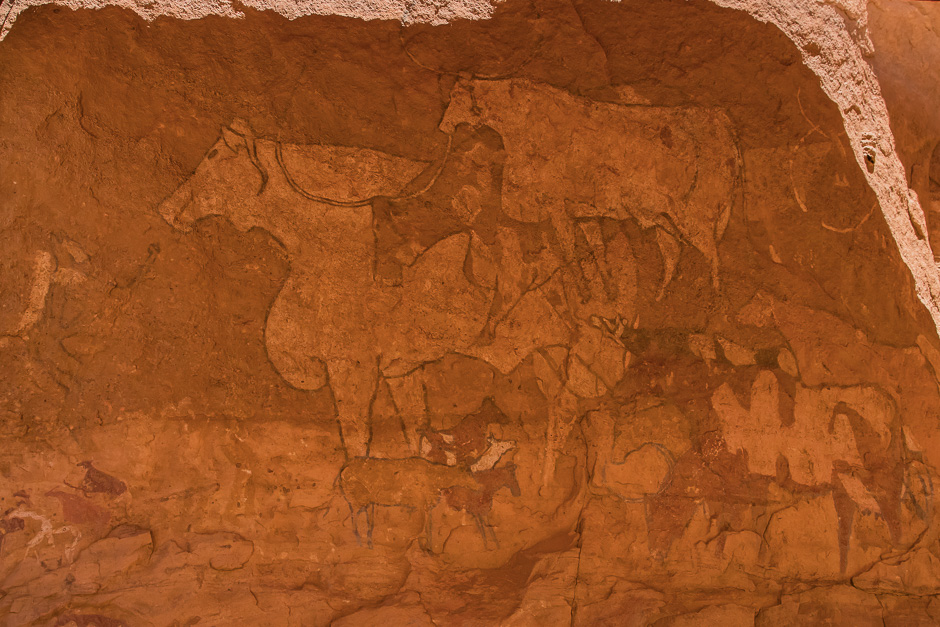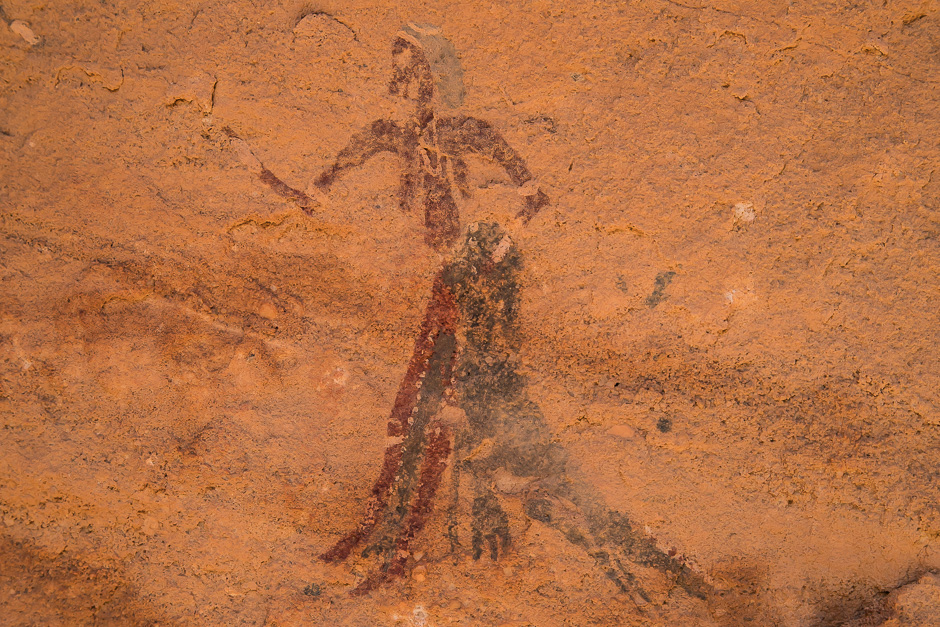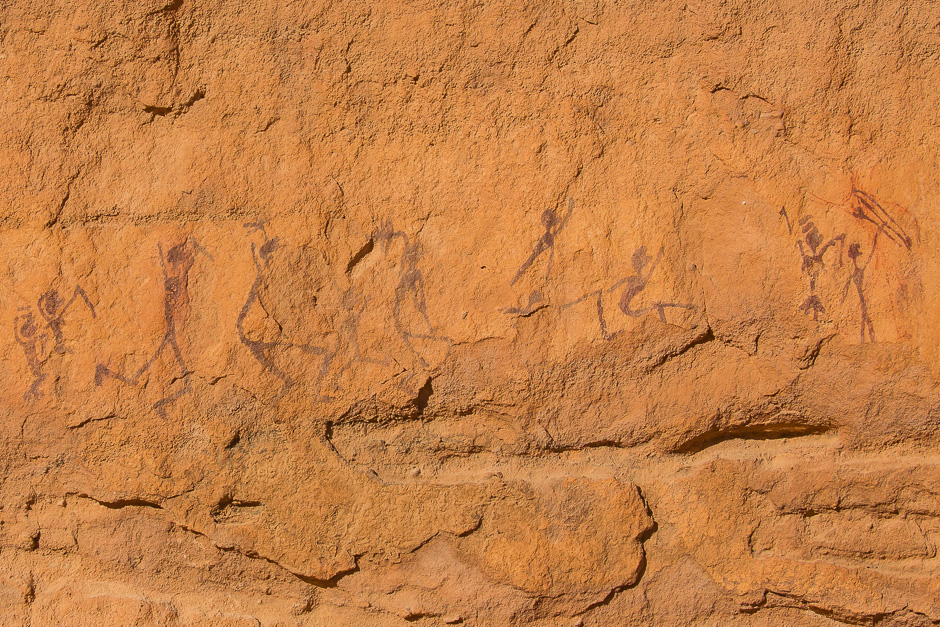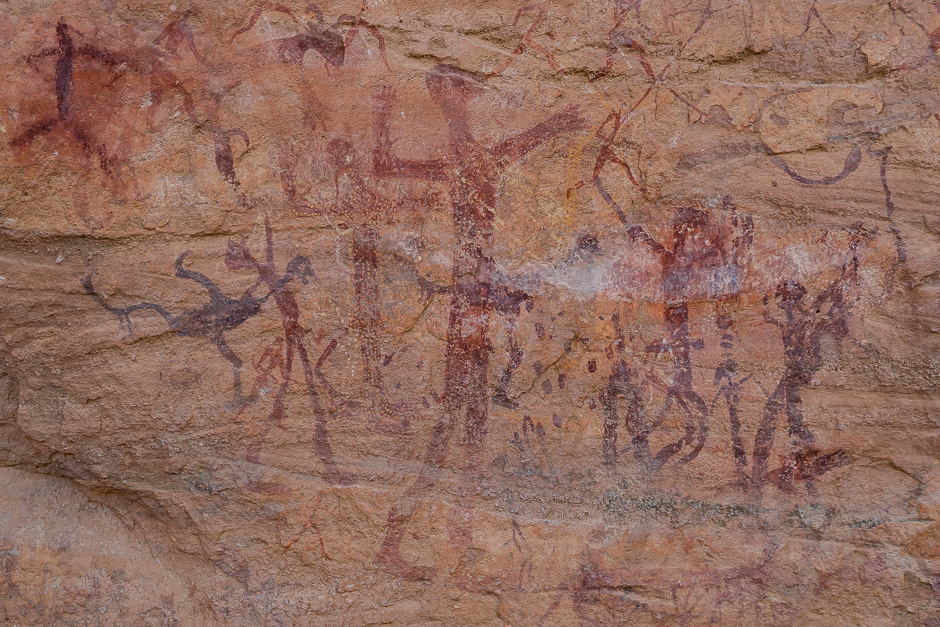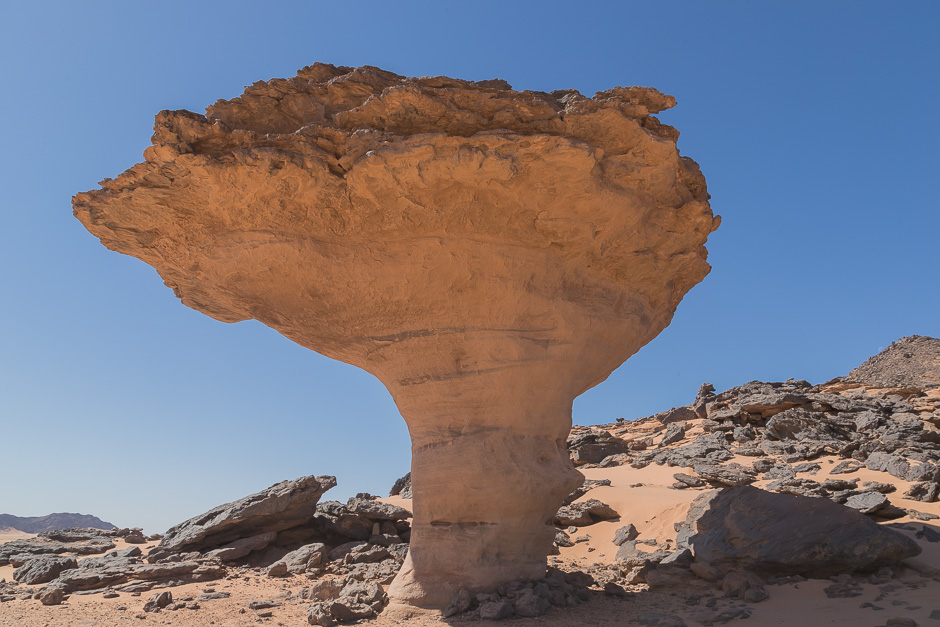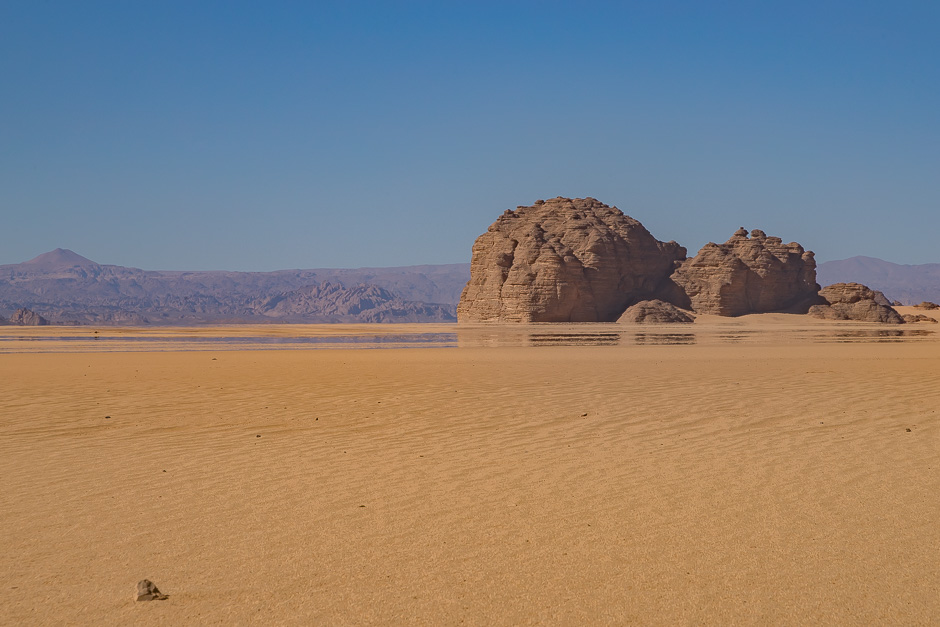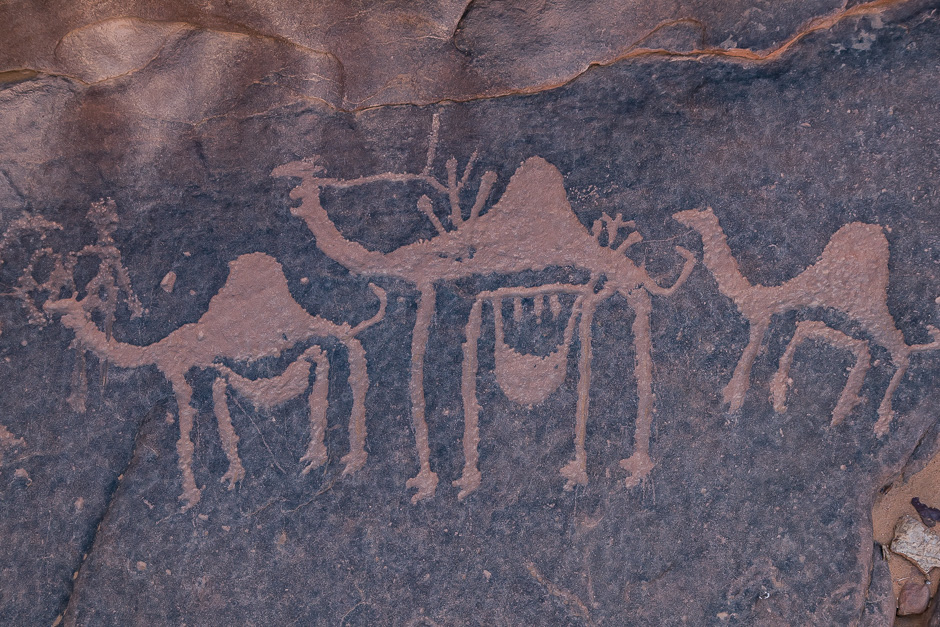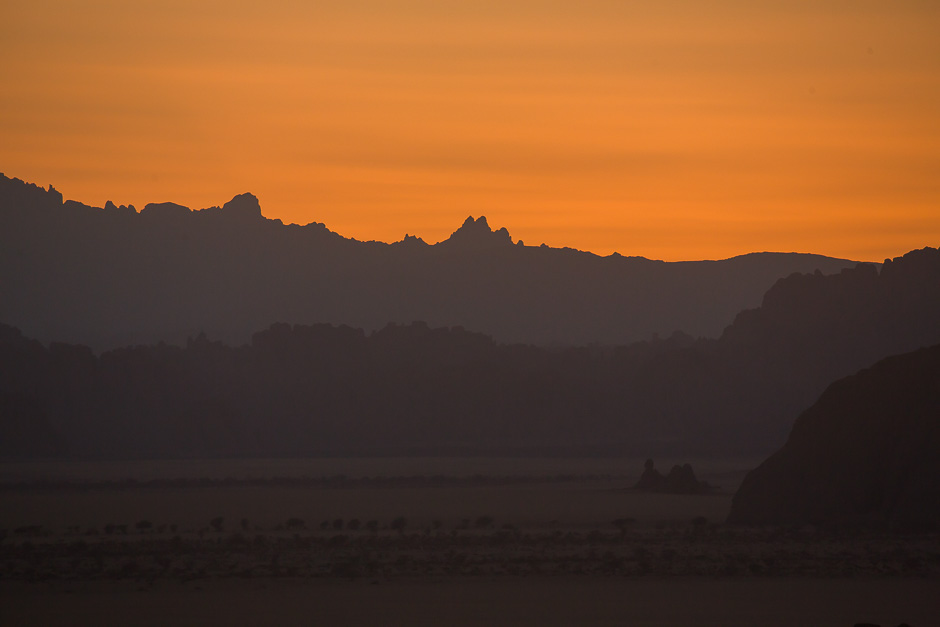The Tibesti massif is a mountain range in the Central Sahara and it is located in the north-west of Chad. Its northern part is divided by the border of Libya. There are many volcanic mountains in the Tibesti such as Emi Kousi (3,445m), the highest mountain in the Sahara. However, there is no volcano in the east where the Ouri plain extends. The land is formed with sandstone and sands. The climate is very arid and the vegetation can be seen only at dried river beds. The only habitable area is a small village of Ouri.
The Ouri plain is very rich in rock art and there are many beautiful paintings and engravings. The rock art in the Ouri plain is very unique and highly diverse. It was surprising to see a huge fresco painted by an artist over 20m of a wall, multi colored paintings, a colored engraving, etc.
The Tibesti massif had battle fields during the civil wars and there are still hidden mines in many places. The exploration of rock art was done carefully following the instructions of a “mine guide”. (February 2017)
Map of exploration
Panoramic rock art of Ennedi: http://hanafusa.info/project/saharan-rock-art/
ティベスティ山地はチャド北西部に位置し、北部はリビアとの国境線で分断されている。ティベスティにはサハラ最高峰のエミクーシ山(3,445m)など火山が多いが、今回訪れた東側のウーリ平原には火山はなく、砂岩と砂地で形作られている。気候は完全な砂漠気候で、草木は涸れ川跡にわずかに残るのみ。人間が住めるのはウーリという小さな村があるだけで、遊牧民に出会うこともない。
ウーリ平原は岩壁画の宝庫で、洗練された美しいものが多いこととともに、スタイルの多様性にも驚かされる。幅20mの壁を使った壮大な壁画、多色の絵具を使った人物画、刻画を彩色したものなど、他の地域では見たことのない岩壁画が見られた。
ティベスティは内戦の戦場ともなった地域で、未除去の地雷が数多く残っている。また、反政府軍の残党もリビア国境付近に潜伏しているとのことだ。そのため岩壁画調査は「地雷ガイド」を雇って、危険地域を避けながら慎重に進めなければならなかった。最終的にリビア国境の20㎞手前より先には行くことができなかった。
(2017年2月)
調査地マップ
大型岩壁画パノラマ写真: http://hanafusa.info/project/saharan-rock-art/

